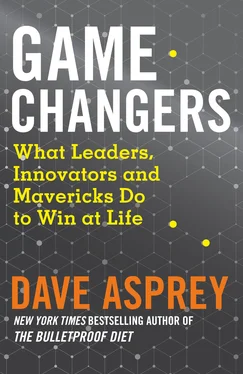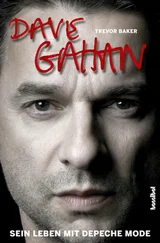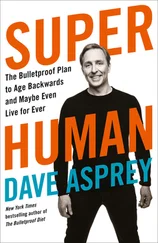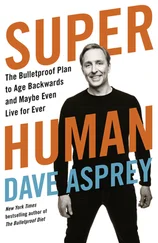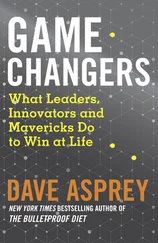Mattias always loved learning, and when he discovered that his memory could be improved dramatically, he set out to train his brain. Just a few months later, he won his first Swedish memory championship. He compares brain training to learning to drive a car. It takes a few months, and then you have a new ability for the rest of your life. Even better, the skill can increase and become stronger over the years, just like (hopefully) your driving skills.
Mattias says that the basic way to hack your memory is to teach your brain how to think in images rather than words. This requires training your visualization skills. When you visualize images, information takes a shortcut in the memory-storage part of the brain, skipping over short-term memory and heading straight to long-term memory. Out of our five senses, our sight is the most important to the brain, because it is the most closely tied to our survival. Three-quarters of the neurons that work with our senses are connected to sight. (This is also why poor-quality light sources drain so much of your brain energy and why we use TrueDark glasses when brain training at the 40 Years of Zen neurofeedback program.) Some people think that they learn better through sound or through touch, but Mattias says the experts know that we learn best through visualization. Learning through doing or teaching is an even more powerful way to remember new information, but that’s because both of those approaches engage your visual senses.
When you learn through sound by repeating information out loud over and over again, the brain can take in only a tiny amount of data at once. When we learn in images, our brains absorb more information more quickly. How does this work on an everyday, practical level? Let’s say you’re reading the newspaper. As you read, see if you can visualize the contents of a particular article as if it were a movie in your mind. Start off with something that’s relatively easy to visualize. For example, instead of using an article about the economy or international politics for this purpose, look at the local police blotter and imagine a story about a robbery.
Picture the robber fleeing, coming out from a bank, and running down the pavement. What does he look like? Picture his black hat, green jacket, and yellow pants. Imagine him running, being chased by two cops with their guns drawn. Can you really see it? Train your mind to hold that image for a little bit. Then make it bigger. Notice the robber’s eyes, his hair. What does his face look like? Start to see the pavement in greater detail.
You’ve probably done this before without even thinking about it, most likely when reading a novel. When you intentionally create such images, though, you can better remember the details because the images create a lasting imprint in our brains. The more often you do this, the more it will start to happen naturally. Images will start to pop up automatically, and learning through visualizations will become your new habit.
If you think you’re “not a visual person,” you simply need to become better at visualization. To do so, start with something simple. Close your eyes and visualize a dog. Choose a specific type of dog, the first one that comes to your mind. When visualizing, you should always use the first image that comes to your mind. See the dog in front of you. Now make that image bigger. See it in more detail, as clearly as possible. It’s important to make sure that your visualizations are in 3-D. Those images last longer in the brain than one-dimensional images do.
You can start with a dog or a newspaper article, but Mattias says that after a while you will begin to habitually translate all kinds of information into images, even numbers and crazy math formulas. He suggests practicing this skill every time you hear someone speak. As you listen, see what images pop up in your mind and hold them there. Really focus on the details so you remember them well. The images will function like clues that your brain can follow to find its way back to the original information. Eventually, with practice, your brain will work almost like a magnet, attracting new information and holding on to it.
Of course, the technique of visualization is nothing groundbreaking—it’s an ancient concept that has been practiced for millennia. When I went to Tibet to learn meditation, the monks directed me to sit for hours in a temple with my eyes closed performing incredibly detailed visualizations. Not “Visualize the Buddha.” More like, “Visualize the Buddha sitting on a throne. The throne has three steps. Each step has a painting of three flowers with six petals.” By the time they got to describing what the Buddha was wearing and in what position he was sitting, there was no possible way to remember it all without crafting the image. I didn’t realize at the time that visualizing was training my brain to paint images instead of remember words, but that was exactly the outcome.
At his level of expertise, Mattias says that he can store information indefinitely by scrolling through the images he’s created, as if he were browsing through pictures on his smartphone. He never has to reference the original information again, just the images in his mind. He practices visualizations during quiet times, such as when he’s waiting for someone or brushing his teeth. He scrolls through a few images at a time to keep them stored in his memory.
Images are useful for more than remembering lists. In fact, I still suck at remembering long lists, and memorizing things has always made my eyes cross. Yet I’m grateful for the tool of visualization, because it allows me to harness the power of images to upgrade my performance. It allows me to understand and interact with a wide variety of experts from all sorts of backgrounds as diverse as functional neuroscience, business leadership, hormone replacement, athletic performance, and antiaging without being clueless. I couldn’t keep all of the information about each of these people and their areas of expertise straight in my head to conduct a good interview if my brain were simply full of words. In fact, I wrote my last book by first drawing pictures of mitochondrial pathways for each chapter and then crafting the words. It’s all about the image: when you visualize a detailed picture of something, you gain a kind of knowledge that simply isn’t possible through rote memorization.
After all, as Mattias explained to me, language is limited. There are only so many words in any language, but there are endless images. And just like those images, if you train your brain and upgrade your hardware, your software, and your wiring, you, too, can become limitless.
Action Items
The next time you listen to a podcast or an audiobook, close your eyes and see if you can imagine the pictures that the speaker is trying to draw in your head. Closing your eyes puts you into an alpha brain state, which is conducive to creativity and frees up your visual hardware. (Obviously, do this only when you’re not driving or otherwise engaged!)
Try mind mapping—drawing notes on paper using very few words but illustrating the connections between them.
Consider taking Jim Kwik’s courses on memory at www.jimkwik.com.
Especially if memorizing things is a goal, consider Mattias Ribbing’s online courses (including a free training) at www.grandmasterofmemory.com.
Recommended Listening
Mattias Ribbing, “Mastering Memory,” Bulletproof Radio, episode 140
Jim Kwik, “Speed Reading, Memory & Superlearning,” Bulletproof Radio, episode 189
Jim Kwik, “Boost Brain Power, Upgrade Your Memory,” Bulletproof Radio, episode 267
Конец ознакомительного фрагмента.
Текст предоставлен ООО «ЛитРес».
Читать дальше
